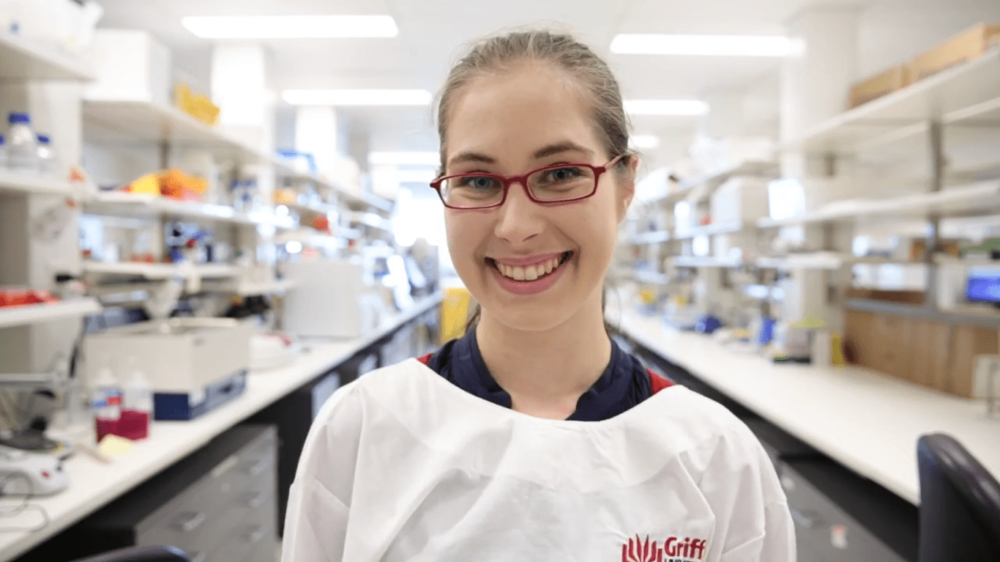A PhD candidate in Neuroscience and Microbiology at the Menzies Health Institute Queensland, Heidi Walkden provides some insights into her research discoveries and shares her passion for public outreach to promote science. Heidi is part of Griffith’s Spinal Injury Project and currently investigating how pathogens can invade the brain and contribute to the onset of neurodegenerative diseases.
Heidi still has vivid memories of her first exposure to neuroscience – it was in Year 10, when she competed in the Australian Brain Bee Challenge and reached the state finals. She says this competition dramatically influenced her choice to study a Bachelor of Biomedical Science after she finished high school.
Upon graduating from her Bachelor’s, Heidi undertook a year of research for her Honours degree. Her project, led in collaboration with the Menzies Health Institute Queensland, the Institute for Glycomics and Griffith Institute for Drug Discovery aimed to investigate whether bacteria could invade the brain via nerves found within the nose.
“Our results were the first to show that, not only could bacteria invade nerves within the nose, but they could also travel along the nerves and reached the spinal cord within 24 hours of inoculation,” she says.
Her current PhD aims to build upon this riveting research finding by testing additional types of bacteria. She is currently investigating whether an internal nose injury, which can occur during a cold or nose bleeds, could also increase brain bacterial invasion.

“My PhD journey is made up of many wonderful experiences,” she says.
“Not only does Griffith University have world-leading research, it also has a very supportive academic community which is essential for a great PhD experience.”
“The opportunity to present my research at many conferences has been invaluable for developing collaborations with academics from across the globe and to learn about other fields of research.”
Some of her highlights include reaching the top-10 Asia-Pacific round at the Three Minute Thesis competition with her presentation called “Does Breathing Kill?” which helped her to further develop her science communication skills.
A strong advocate for women in science and promoting their visibility, Heidi was also selected to go to Bundaberg as part of the ‘Catch a Rising Star: Women in Science in Regional Queensland’ program to share her knowledge with high school students and build relationships within the community.

When reflecting on her journey to date, she says her favourite thing about studying with Griffith University has been the opportunity to be a part of such a large research team from all over the globe.
“This means that we have a large support network to fall back on during more difficult times. We are always learning something new from one another.
“A PhD takes a lot of time and doing something that you enjoy can make all the difference for a great research journey.”
An effective working relationship between research candidates and their supervisors is crucial to the successful completion of every research candidature. Griffith University provides all of these benefits to our research candidates. Learn more on the Griffith Graduate Research School website.



